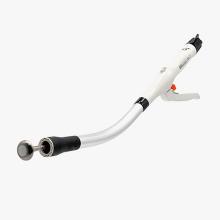The EEA Stapler is a revolutionary medical device that has transformed the way surgeons perform surgical procedures. This device is designed to perform circular anastomosis, which is the joining of two tubular structures in the body. This could include the joining of the small or large intestine, stomach, or even the esophagus. The EEA Stapler provides an efficient and effective method for performing these procedures, improving patient outcomes and reducing the risk of complications.
EEA stands for "end-to-end anastomosis," which is the surgical technique that this stapler is designed for. The EEA stapler consists of two parts: a circular stapling device and a detachable anvil. The stapler is inserted into the lumen of the bowel, and the anvil is placed on the opposite end. The two parts are then joined together, and the stapler fires to create a circular anastomosis.
One of the main advantages of using an EEA stapler is that it can save time in the operating room. Because the Endo cutter stapler creates a circular anastomosis with a single action, it can be faster than suturing the two ends of the bowel together. Additionally, the EEA stapler can be used in areas that are difficult to reach with traditional suturing techniques, such as deep in the pelvis.
Another advantage of the EEA stapler is that it can reduce the risk of leaks or other complications. When suturing two segments of bowel together, it's possible for small gaps or spaces to remain between the sutures, which can allow fecal matter or other fluids to leak out. The EEA stapler creates a tight seal that minimizes the risk of leakage.

If you're considering using an EEA stapler, it's important to understand the proper technique. Here's a basic overview of how to use the stapler:
Before using the EEA stapler, you'll need to prepare the bowel by dividing it and then resecting the diseased segment. The two ends of the bowel should be trimmed to ensure that they are even and that there is no tension on the anastomosis.
The circular stapler should be inserted into one end of the bowel, and the detachable anvil should be inserted into the other end. The stapler and anvil should be joined together, and the surgeon should ensure that the tissue is properly aligned and secured.
Once the stapler and anvil are in place, the surgeon should fire the stapler to create the anastomosis. The stapler will cut and staple the tissue simultaneously, creating a circular closure. The anvil can then be detached from the stapler and removed from the surgical field.
To ensure that you're using the EEA stapler safely and effectively, here are some tips to keep in mind:
Practice using the stapler on a model or in a simulation before using it on a patient.
Ensure that the bowel is properly prepared and aligned before using the stapler.
Make sure that the stapler and anvil are the correct size for the diameter of the bowel.
Use the stapler in a dry field to prevent tissue slippage.
Consider using an additional suture or reinforcement device to further secure the anastomosis.
The EEA Stapler has revolutionized the way surgical procedures are performed, offering an efficient and effective method for joining tubular structures in the body. With its ability to improve speed and efficiency, reduce the risk of complications, and enhance patient outcomes, the EEA Stapler has become an essential tool for surgeons around the world.
If you are considering undergoing a surgical procedure, talk to your surgeon about the benefits of using the EEA Stapler. With its proven safety record and ability to improve patient outcomes, the EEA Stapler may be the right choice for you.